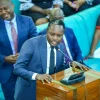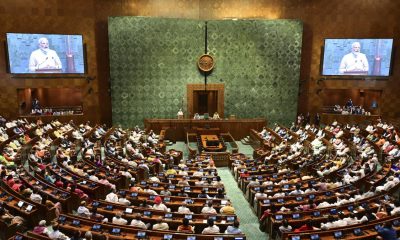Analysis
Public hostility towards journalists worrying

According to Robert Ssempala, the Executive Director of HRNJ, some of the perpetrators of violence against the pressmen are music celebrities, while others are ordinary peasants who beat up journalists.
“This is a worrying trend because it shows that some sections of the population are yet to appreciate the cardinal role played by the media in a democratic society,” says Ssempala.
Ssempala partly attributed the rising hostility of some sections of the public to comments made by top politicians including President Museveni which ridicule journalists and expose them to mob justice. Sempala urged the public to play a more active role in protecting journalists.
“The public is the direct beneficiary of the media work through compiling, analysing information for public consumption and decision making. This is therefore a vital role played by the media which deserves the support of everyone in society if democracy is to be sustained,” argued Ssempala.
The Uganda Police for the third year in a row come into the spotlight after the force was ranked by the PFIR 2013 as the biggest perpetrators of abuses of media freedom in Uganda. Out of the the 124 cases recorded by HRNJ in 2013, police officers were involved in 85 cases, 46 of which involved physical attacks by police officers.
“Despite the creation of the Police professional Standards Unit, we have not seen a single report showing the conclusion of an investigation into abuses of journalists and action taken against errant officers,” Ssempala added; ”On the contrary, these police officers have been promoted to higher ranks within the force.”
The continuing impunity of police officers to abuse or assault journalists has raised serious concern among human rights activists with some urging for prosecution of individual police officers in courts of law for crimes they commit.
Joseph Mugisha, the Executive Director of the Open Society Initiative for Eastern Africa (OSIEA) said: “We’ve seen journalists appear in court. It is now time for you to take these errant officers to court under the Anti-Torture Act.”
The report revealed that two journalists were killed during 2013, but that no thorough investigations have been carried out to date by the responsible police authority into the causes of the death Thomas Pere and Alex Kule.
The body of Pere, a former journalist with The New Vision was found dumped in a drainage channel back in May 2013 in what witnesses related to an iron bar attack. Kule’s body on the other hand was found in the transmission room of Radio Messiah where he was working, although the actual cause of his death remains a mystery.
As Ssempala argued, the death of Kule has further exposed the police as an enemy of media, because it even failed to facilitate one police officer to come to Kampala from Kasese to carry out a pathology test on parts of the deceased’s body so as to find the actual cause of his death.
New arbitrary tactics
The report has revealed that the government is devising new and arbitrary ways to control the media. These include forcing media houses into negotiations rather than seeking justice through courts of law to settle disputes.
The report cited the agreement that was reached between the bosses of both Monitor and Red Pepper Publications and the government, in which the media houses regretted their actions. The government used those agreements to allow the media houses to reopen for business following the 10-day siege that came from publication of the critical letter by former chief of intelligence bodies Gen. David Sejjusa.
Ssempala argued: “Considering that both media houses were forced to reopen, it means the closures were way out of the legal structures of this country. This means that we cannot seek comfort within the existing legal framework but only to step up our activism to protect a free and critical media,”
The report further also note the growing use of underhand mechanisms to suppress media freedoms away from direct attacks or using the legal procedures. These underhand methods for instance include high-ranking government officials making calls to editors and media owners threatening them not to publish, host a critical voice of some individuals or items from a given incident.
“This is a big setback to our freedom and responsibility to give a platform to everyone including those whom some people might not want to listen to,” argued Ssempala.
This observation was made following the directive by the former Resident District Commissioner of Kampala Mpimbaza Hashaka to the management of Radio One and Akaboozi accusing two of their talk show hosts for giving a platform to people who ‘deliberately tarnish the image of govenrment’. Similar concerns of ‘pressure from above’ were also aired by reporters from CBS radio when outspoken MPs Betty Nambooze and Muhammad Nsereko were temporarily banned from appearing on the radio’s political talk shows because they were critical of government.
The Special UN Rapporteur on the situation of Human Rights Defenders and former Judge Margaret Ssekaggya, who launched the Report titled Narrowing Space; Media Under Seige, urged the media to step up their work on sensitizing the population in general as well as specific strategic organs such as judges, the police in order to reverse the narrowing space for media.
Media activists also expressed concern over the recent inactment of hostile laws against the media.
Solomon Lubambula contributed to this article
Comments


















